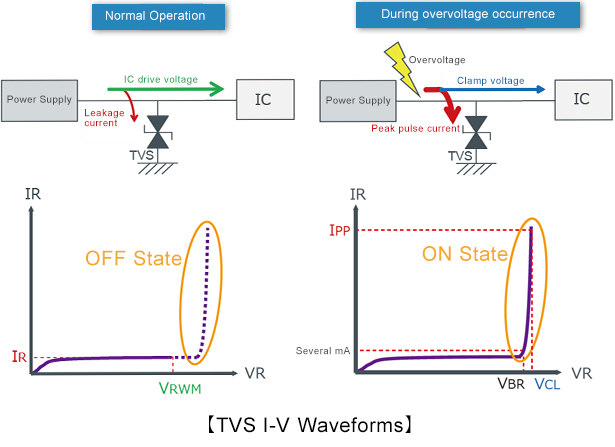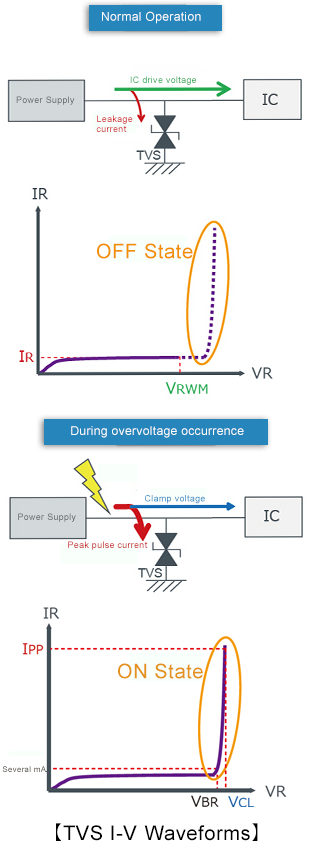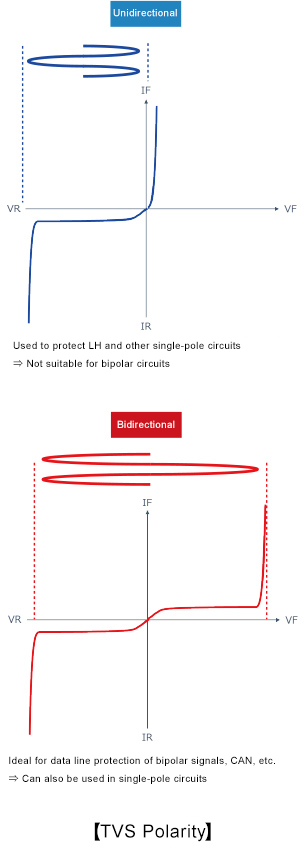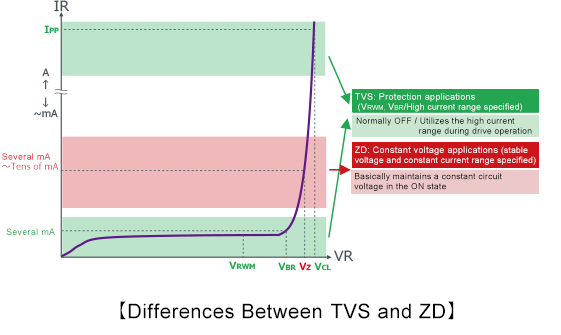TVS Diodes
Understanding TVS Diodes
| Basic Structure | Symbol | Applications and Features |
|---|---|---|
 |
 |
|
An acronym for Transient Voltage Suppressor, TVS is designed for overvoltage and ESD protection.
Transient Voltage Suppressor Diode Operation
TVS diodes are devices used to protect downstream ICs from unexpected overvoltages, surges, and electrostatic discharge caused by static electricity and power supply fluctuations. TVS diodes are essential for transient voltage suppression in electronic circuits. In contrast to rectifier and Schottky barrier diodes that use forward characteristics, TVS diodes (like Zeners) take advantage of the reverse characteristics. By placing the TVS diode in parallel with the IC as shown in the figure below, the diode operates normally in the OFF state, consuming only a certain amount of leakage current. When an overvoltage such as surge occurs, the IC turns ON and clamps the overvoltage by allowing the pulse current to be consumed on the TVS side, protecting the subsequent stage IC from voltage spikes.


TVS Diode Polarity (Unidirectional and Bidirectional TVS Diodes)
The polarity of the TVS diode, including bidirectional TVS diodes, is a parameter related to circuit quality. While unidirectional TVS is used as a protection element in LH and other single-pole circuits, it is not suitable for protecting bipolar circuits. In contrast, bidirectional TVS can protect both the positive and negative poles, making it suitable for protecting data lines in bipolar circuits, CAN, and the like. Bidirectional TVS can also be used to protect single-pole circuits.


Differences Between TVS and ZD
While TVS and Zener diodes both take advantage of the reverse characteristics of the diode, Zener diodes are mainly utilized for constant voltage applications, so the Zener voltage(VZ)is specified in the low current range of 5mA to 40mA where the voltage is stable. For TVS, it is important to have breakdown voltage in the event sudden overvoltage such as surge is applied while also operating in the normally OFF state to prevent interference with the IC’s drive voltage. TVS diodes are important for protecting against electrical transients caused by inductive load switching. As a result, there are two specified voltages for standoff(VRWM)and breakdown(VBR), which are voltages that never cause breakdowns. And since overvoltage protection is the main application, high current in the range of several A to tens of A are listed as part of the protection characteristics to protect circuits from overvoltage transients.





